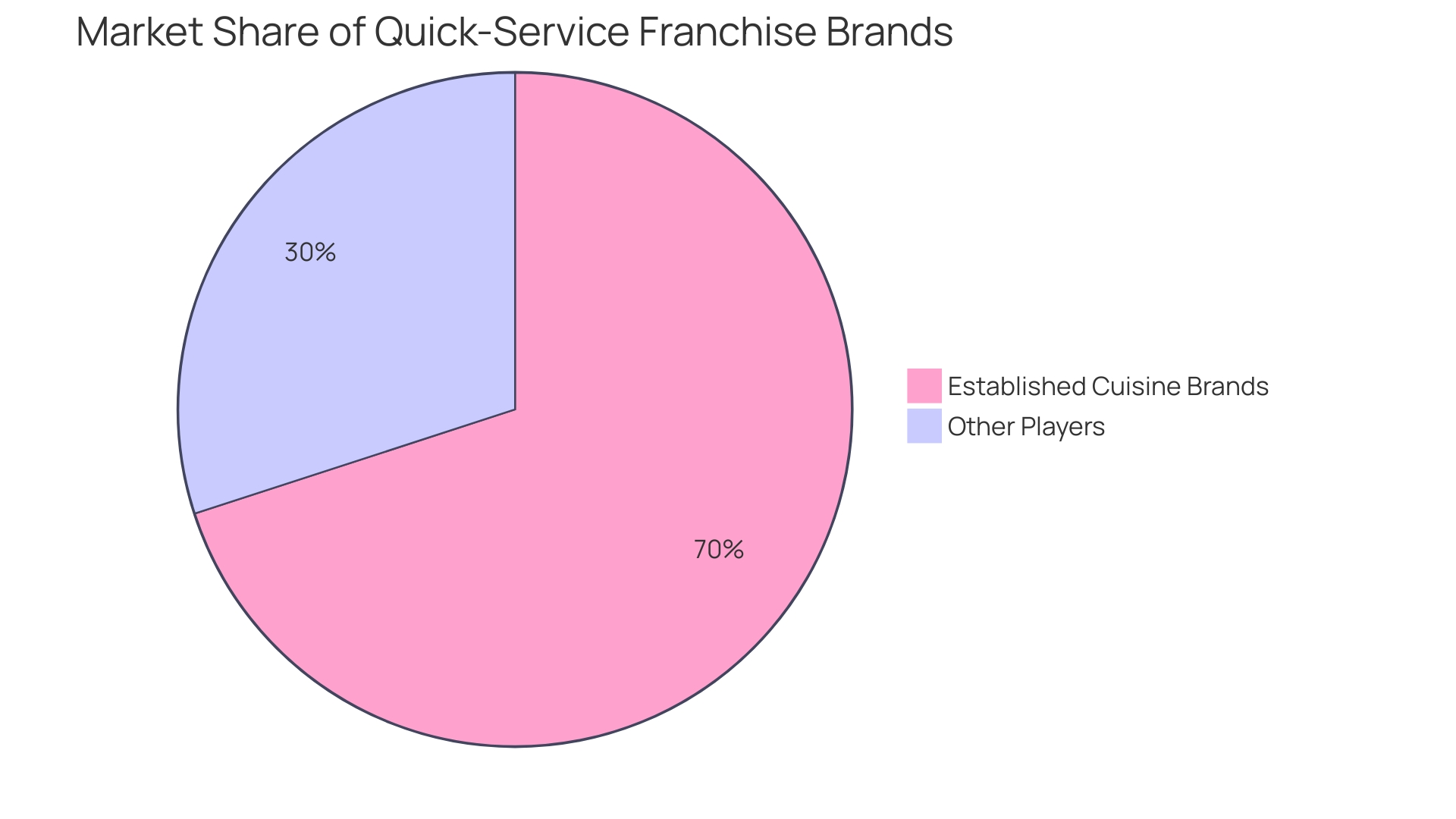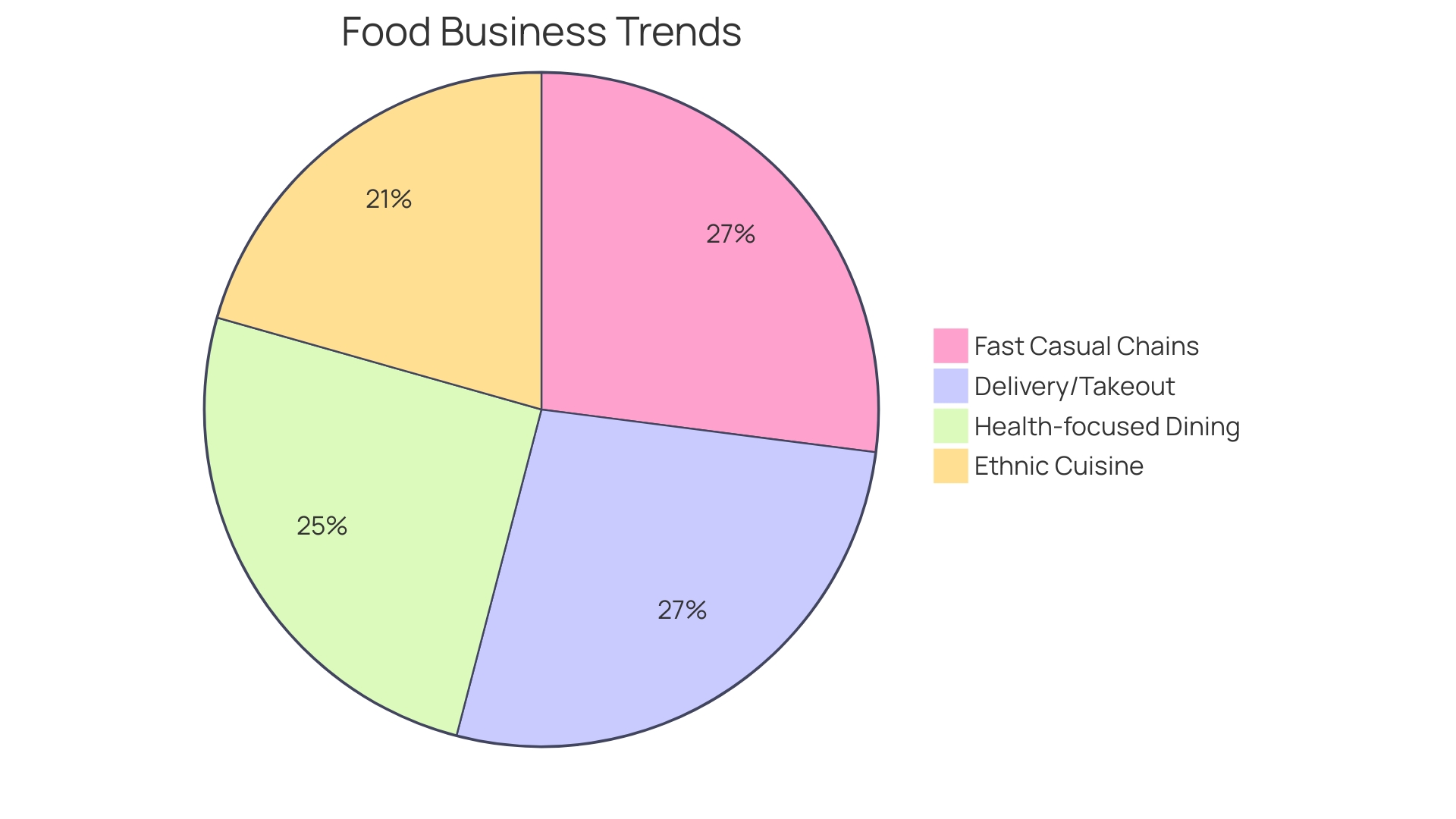Introduction
The food franchise industry in America is experiencing significant growth, with a market size of $124 billion as of 2020. This expansion is driven by consumer demand for affordable and convenient dining options, as well as a strong affinity for established food brands. Fast food franchises, in particular, are thriving by offering quick service, menu uniformity, and the convenience of drive-through or take-out.
The industry’s resilience is evident as it adapts to supply chain fluctuations and changing workforce dynamics. With a wide variety of fast food and health-conscious options available, the food franchise sector offers numerous opportunities for consumers and potential franchise owners. However, thorough research and careful consideration of skills and market potential are crucial for aspiring franchisees.
In this article, we will explore the top food franchise opportunities, financial requirements, segmentation of food franchise options, benefits of franchising in the food industry, and tips for choosing the right franchise for your business goals. By delving into these topics, we aim to provide valuable insights and practical advice to career transitioners looking to enter the food franchise industry.
Growth and Statistics in the Food Franchise Industry
The American dining scene is being reshaped by the burgeoning food chain industry, which has witnessed a robust expansion with a market size of the food chain sector climbing to a remarkable $124 billion as of 2020. This trajectory of growth is set to maintain its momentum, propelled by an escalating consumer demand for dining options that are both easy on the wallet and time-saving, alongside a strong affinity for established cuisine brands. Quick-service franchises, in particular, are reaping the benefits of this trend, thriving on their ability to offer speedy service, uniformity in menu offerings, and the convenience of drive-through or take-out. These establishments leverage the powerful combination of brand recognition and efficient operational frameworks, provided by the franchisor, to serve a diverse clientele. The industry’s resilience is evident as it navigates through the ebbs and flows of supply chain fluctuations and evolving workforce dynamics. The variety and affordability of quick meals continue to attract customers, satisfying a spectrum of tastes and dietary preferences. Moreover, individuals who prioritize their health have a wide range of business opportunities to select from, each competing for a portion of the market with their exceptional sales history, growth rates, and well-known standing. Whether it’s a quick burger, a fresh salad, or exotic Asian flavors, the food industry sector offers a plethora of opportunities for both consumers and potential business owners alike. Nonetheless, it’s essential for individuals contemplating entering this field as business owners to perform comprehensive investigation, evaluating the compatibility of their abilities with the business structure and the possible appeal of the business in their desired market. The commitment extends beyond financial investment to include time and effort, ensuring the selected business opportunity aligns with their business goals and customer needs.

Top Food Franchise Opportunities in 2024
Starting a food business venture opens a world of opportunities, and staying updated on the growing trends is crucial. Fast Casual Chains such as Chipotle and Shake Shack are reinventing dining with their emphasis on fresh, bespoke offerings. They cater to the fast-paced lifestyle while maintaining a semblance of culinary finesse, which has been a key factor in their escalating popularity.
Furthermore, the market signals a rise in businesses that promote good health, with health-focused dining establishments such as salad bars and smoothie stores ready for growth. This is a reflection of a customer base that is increasingly vigilant about dietary choices and prefers establishments that align with their health-conscious ethos.
The attraction of unique tastes continues to fascinate the American palate, ushering in a golden era for Ethnic Cuisine businesses. Offering a taste of authenticity, these establishments—from Mexican to Thai and Indian—are not just dining spots but cultural gateways.
Lastly, the convenience of Delivery and Takeout cannot be overstated in our current fast-paced society, with pizza chains and sandwich shops leveraging this demand to their advantage. These businesses flourish not only because of the convenience of their service but also because they align with the preferences of modern customers.

Key Financial Requirements for Popular Food Franchises
Getting into the food industry requires a complete understanding of financial commitments. Initially, the fee for the business ownership is a substantial investment, which differs greatly depending on the reputation of the brand and the geographical area. For example, the beginning stage for a KFC investment is between $1.4 million to $3.1 million, inclusive of the fee and other essentials like real estate, construction, and initial operating expenses. Franchisees must be prepared for ongoing royalties and advertising fees, typically a slice of the gross sales pie.
Moreover, equipping, stocking, and customizing your location to meet brand standards is part of the initial investment. Another example is Culver’s, a Midwest favorite known for its ButterBurgers and frozen custard, where potential franchisees need liquid assets ranging from $350,000 to $600,000 to kickstart their venture. Apart from the initial expenses, adequate working capital is also crucial for daily activities like paying rent, utilities, and employee salaries until your business can financially support itself.
The layout and design of your establishment also play a crucial role, with successful businesses allocating precise percentages of space to dining, kitchen, and other operational areas to ensure efficiency and customer satisfaction. Hence, it is crucial for potential owners to carefully strategize and evaluate their financial preparedness before venturing into the thriving and fulfilling realm of businesses.
Segmentation of Food Franchise Opportunities
Exploring the culinary industry requires comprehending the distinct sectors that target different customer preferences. Consider the fast-paced Quick-Service Restaurants (QSR), where speed is of the essence. These businesses prioritize a simplified menu and fast service, appealing to diners on the go. In contrast, the Casual Dining segment fosters a laid-back atmosphere, offering an extensive menu to encourage longer visits and a dining experience that’s both comfortable and affordable. Fast Casual establishments strike a balance, presenting an elevated food quality akin to casual dining with the efficiency of a QSR. For those with a passion for specific tastes, Specialty Food businesses concentrate on niche markets. They captivate patrons with distinctive cuisines or iconic dishes, whether it’s gourmet pizza, artisanal sandwiches, or decadent desserts.
To embark on a journey of starting a business under a well-known brand, one must consider the financial commitments, such as the fees associated with joining the franchise and the ongoing payments, and the average profit margin specific to the niche, such as a pizza franchise. It’s essential to consider these factors in conjunction with the reputation of the business, its potential for growth, and how well its products align with regional preferences and trends. The culinary sector, despite its challenges, continues to be strong, driven by business models that uphold affordability and convenience while adjusting to changing consumer preferences. Entrepreneurs looking to own a business should explore the intricacies of the sector, from the operational methods of quick-service establishments to the market attractiveness of nutritious cuisine, in order to find the ideal fit for their business goals.
Benefits of Franchising in the Food Industry
Exploring the franchising realm, especially within the culinary sector, offers several benefits for individuals seeking to enter entrepreneurship with a backing system. The first advantage is the inherent value of an established brand. Choosing a popular food establishment involves accessing a brand with a well-known name and reputation, which can attract customers and stimulate sales.
Another significant benefit is the comprehensive training and support franchisees receive. This encompasses everything from choosing the right location to implementing effective marketing strategies and operational advice, ensuring that franchisees are well-equipped to thrive in their new venture.
Additionally, business opportunities come with a proven and established business model. This greatly diminishes the uncertainties that typically come with starting a new business from scratch. The franchisor’s experience and the refinement of the business concept provide a blueprint for success that franchisees can emulate.
Lastly, there’s the advantage of group purchasing power. Business owners who are part of the network of franchised businesses frequently benefit from discounted prices on equipment, supplies, and ingredients, which results from the combined negotiating leverage of the network, resulting in decreased expenses and enhanced earnings.
These benefits are particularly evident in various types of business models, from speedy cuisine with its quick service and standardized menus to health food businesses expanding rapidly due to growing interest in healthy eating. Asian culinary businesses also provide a plethora of opportunities given the worldwide appeal of the cuisine, each offering a framework that ensures uniformity and ease to fulfill contemporary consumer requirements.
How to Choose the Right Food Franchise for Your Business Goals
When entering the realm of franchise businesses, aligning your choice with your interests and industry passion is crucial. Your passion for the culinary industry will be the driving force behind your success. Furthermore, understanding the local market is crucial; investigating consumer preferences, competition, and demographics will guide you to the types of food services in demand. The reputation of a business is equally important; look for those with a strong sales record, rapid expansion, and a substantial regional or national presence, as these factors are indicative of a successful brand. Financial considerations are also key. Evaluate the initial investment costs of the business, ongoing expenses, and the projected return on investment, and don’t hesitate to seek financial guidance to ensure a sound decision. Lastly, the franchisor’s support and training offerings are essential. A comprehensive support system and robust training resources are invaluable to the success of your franchise, helping you navigate the complexities of the food and beverage industry.
Conclusion
In conclusion, the food franchise industry in America is experiencing significant growth driven by consumer demand for affordable and convenient dining options. Fast food franchises are thriving with their quick service and drive-through or take-out options. The industry’s resilience is evident as it adapts to supply chain fluctuations and changing workforce dynamics.
When considering food franchise opportunities, aspiring franchisees should conduct thorough research and assess their skills and the potential popularity of the franchise in their target market. Financial requirements, such as franchise fees and ongoing expenses, should be carefully considered, along with the projected return on investment.
Understanding the segmentation of food franchise opportunities is crucial. Quick-service restaurants prioritize speed, casual dining offers a laid-back atmosphere, fast casual combines food quality with efficiency, and specialty food franchises focus on niche markets.
Franchising in the food industry offers benefits such as the value of an established brand, comprehensive training and support, a tried and tested business model, and group purchasing power for reduced costs and improved profits.
When choosing the right food franchise, it’s important to align interests and industry passion, understand the local market, assess the franchise’s reputation and financial considerations, and consider the franchisor’s support and training offerings.
By considering these factors and conducting thorough research, career transitioners can make informed decisions and find success in the food franchise industry.
Start your journey towards owning a successful food franchise today!


